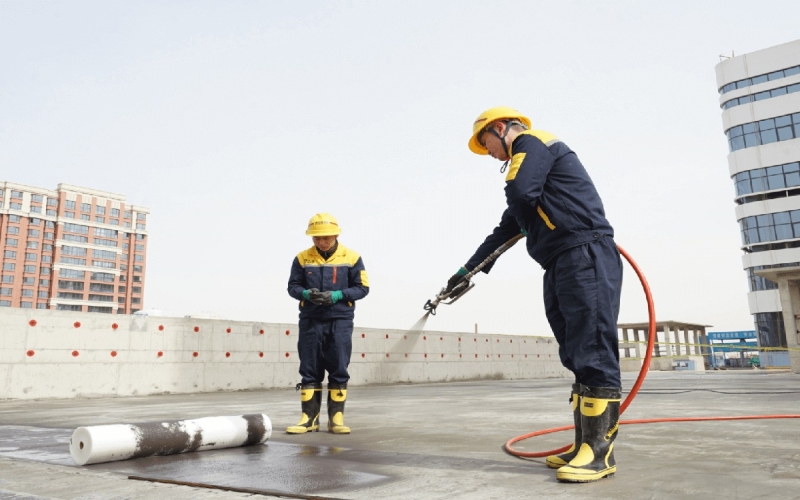In the realm of building maintenance and construction, waterproofing stands as an indispensable defense mechanism against water damage. In cities like Los Angeles, where deck waterproofing is crucial, understanding the importance and effective implementation of waterproofing methods is essential.
Introduction: The Significance of Waterproofing in Building Maintenance
Waterproofing is more than just a protective measure; it’s an investment in the longevity and integrity of a building. Effective waterproofing in Los Angeles, for instance, is not just a necessity but a standard for maintaining structures in top condition.
Overview of Waterproofing Importance
Waterproofing protects structures from water ingress, which can lead to serious damage such as mold, decay, and structural weakening.
The Role of Effective Deck Waterproofing in Los Angeles
For effective deck waterproofing in Los Angeles measures have been taken.As outdoor living spaces like decks are common, effective waterproofing is essential to preserve these areas from the city’s unique climatic conditions.
Understanding Waterproofing: Basics and Benefits
Waterproofing is a critical process in construction and maintenance, offering a myriad of benefits.
What is Waterproofing?
Waterproofing involves applying a layer of a water-resistant material over surfaces to prevent water penetration.
Key Benefits of Waterproofing Structures
The benefits of waterproofing include protecting the structural integrity, preventing health hazards, and enhancing the building’s durability.
Long-Term Cost Savings
Investing in waterproofing can lead to significant long-term cost savings by preventing expensive repairs and maintenance issues.
Waterproofing Techniques and Materials
A range of techniques and materials are available for waterproofing, each suited to different needs and environments.
Traditional vs. Modern Waterproofing Techniques
While traditional methods still hold value, modern techniques offer more effective and longer-lasting solutions.
Selection of Materials for Different Environments
The choice of waterproofing materials varies based on environmental factors and the specific needs of the structure.
Innovative Solutions in Waterproofing
Innovative waterproofing solutions are continually being developed, offering more efficient and sustainable options for building protection.
Challenges in Waterproofing: Common Problems and Solutions
Waterproofing can present challenges, but understanding these and implementing solutions is key to effective water protection.
Identifying Common Waterproofing Challenges
Common challenges in waterproofing include improper application, material failure, and environmental impacts.
Addressing Waterproofing Failures
Addressing failures in waterproofing involves proper diagnosis, repair, and often the application of more advanced solutions.
Preventive Measures and Regular Maintenance
Regular maintenance and preventive measures are crucial to ensure the longevity and effectiveness of waterproofing.
The Professional Approach to Waterproofing
For optimal results in waterproofing projects, a professional approach is essential.
The Need for Expertise in Waterproofing Projects
Professional expertise is crucial for assessing needs, choosing appropriate materials, and ensuring proper application.
Choosing the Right Waterproofing Contractor
Selecting the right contractor involves evaluating experience, expertise, and a track record of successful waterproofing projects.
Deep Dive into Advanced Waterproofing Strategies and Real-World Applications
Expanding on the nuances of waterproofing, let’s delve into advanced strategies and their real-world applications, particularly in challenging environments like Los Angeles. For instance, in the arena of deck waterproofing, professionals like those associated with effective deck waterproofing in Los Angeles are adopting multi-layered coating systems. These systems often combine a waterproof membrane with protective topcoats that resist UV rays and wear, addressing the specific climatic challenges of sunny, coastal regions. Additionally, there’s a growing trend towards eco-friendly waterproofing solutions, such as green roof systems that not only prevent water penetration but also aid in urban heat island mitigation.
In the broader context of building maintenance, advanced waterproofing extends to below-grade structures like basements and foundations. Here, the integration of waterproof membranes with drainage systems plays a critical role in preventing hydrostatic pressure build-up, a common cause of basement leaks. Real-world examples include buildings in flood-prone areas where such integrated systems have effectively prevented water damage during heavy rainfall events.
Moreover, technological advancements have led to the development of smart waterproofing solutions. These include moisture-detecting sensors embedded within structures that alert property owners to potential water ingress issues before they escalate. This proactive approach to waterproofing is particularly beneficial in large commercial buildings where undetected water damage can lead to substantial financial losses.
In high-traffic public spaces like shopping malls or airports, where uninterrupted operation is crucial, rapid-curing waterproof coatings are being employed. These coatings significantly reduce the downtime typically associated with waterproofing applications, ensuring minimal disruption to daily activities.
For Effective Deck Waterproofing in Los Angeles: Best Practices
In Los Angeles, particularly for deck waterproofing, best practices include choosing suitable materials and techniques that consider the local climate and usage patterns.
Conclusion: Ensuring Long-lasting Protection Through Waterproofing
In conclusion, waterproofing is a critical aspect of building maintenance that ensures long-lasting protection against water damage. Whether it’s for effective deck waterproofing in Los Angeles or other waterproofing needs, understanding its importance, techniques, and the need for professional implementation is key to safeguarding structures against the detrimental effects of water ingress.

